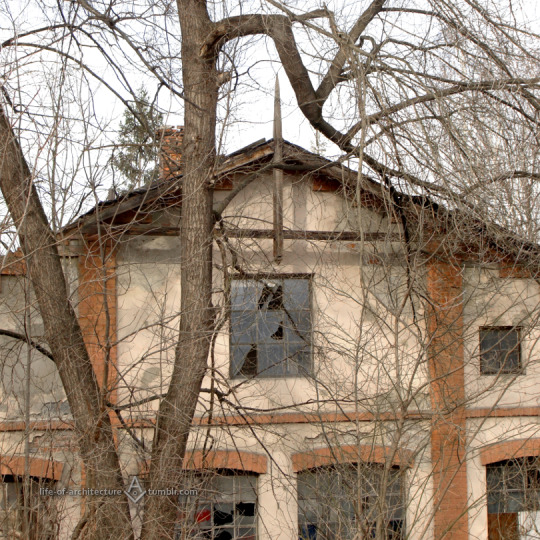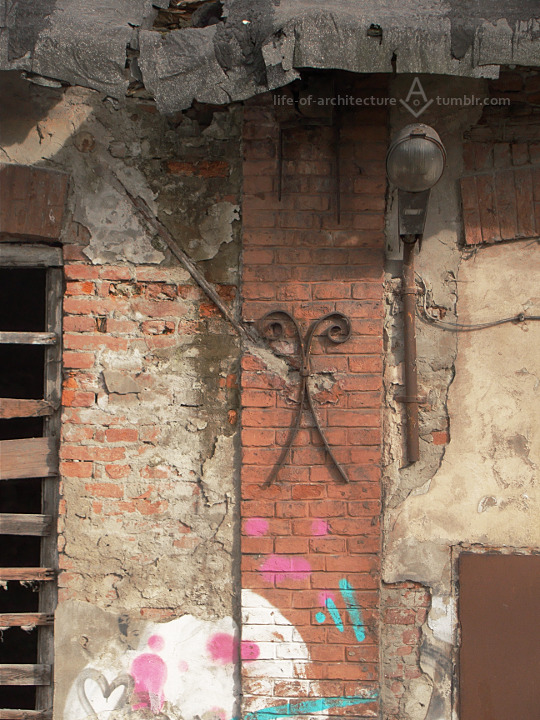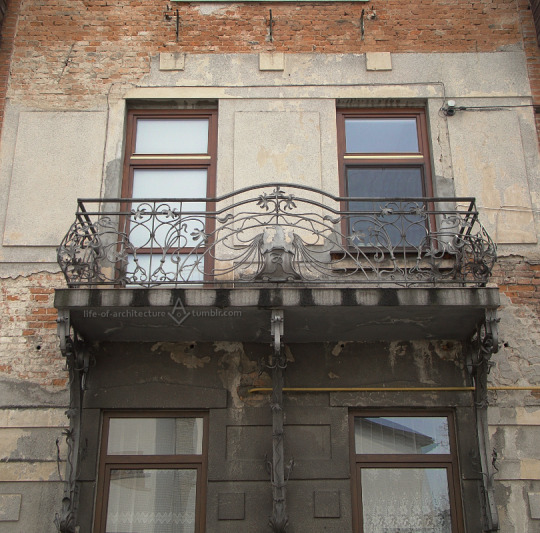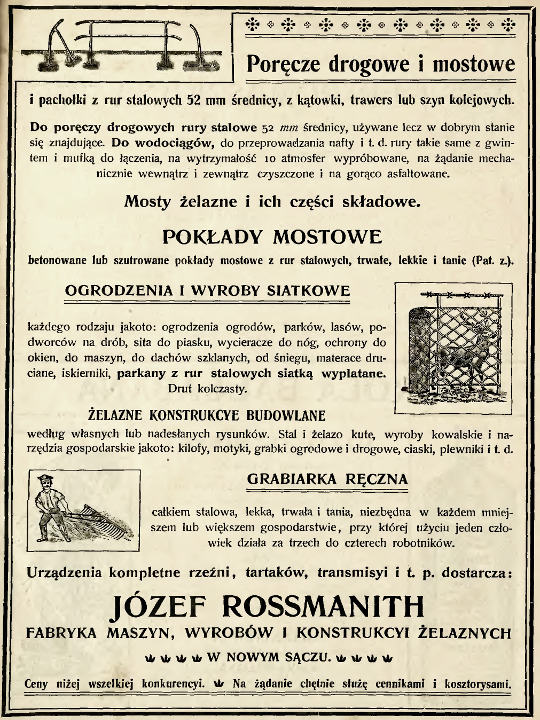#bardejov
Explore tagged Tumblr posts
Text

Statue of an executioner in the main square of Bardejov, Slovakia.
64 notes
·
View notes
Audio
The Gradual Retreat From Certainity by Darker Sun from the album Adumbrated
#somethingneweveryday#music#slovak music#metal#darker sun#aankh#numquam III#numquam the third#bardejov#slovakia#atmospheric metal#narcolepticaprod#narcoleptica productions
17 notes
·
View notes
Text

Bazilika sv. Egídia - Slovakia
8 notes
·
View notes
Text
youtube
BARDEJOV Old Town 2023, Slovakia Walking Tour in 4K
2 notes
·
View notes
Text
Welterbe (auf)gespürt und (er)fahren – SK– Städtisches Denkmalsensemble von Bardejov

Die slowakische Stadt Bardejov nahe der polnischen Grenze besitzt ein kleines, aber außergewöhnlich vollständiges und gut erhaltenes mittelalterliches Zentrum. Nahe des Handelsweges über die Karpaten von Ungarn nach Polen gelegen, war Bardejow im Mittelalter eine bedeutende Stadt. Innerhalb der Stadtbefestigung, einer der zur Zeit ihrer Errichtung fortschrittlichsten in Mitteleuropa, ist um den weitläufigen Marktplatz ein regelmäßig angelegtes Straßennetz aus dem 13. bis 14. Jahrhundert angeordnet. Den Marktplatz mit dem Renaissance-Rathaus in seiner Mitte umgeben Bürgerhäuser aus der ersten Hälfte des 15. Jahrhunderts und die gotische Basilika St. Ägidius mit ihrer kostbaren Sammlung von elf spätgotischen Altären. Die Stadt besitzt auch ein gut erhaltenes kleines jüdisches Viertel, das sich im Laufe des 18. Jahrhunderts um eine Synagoge (1725-1747) herum entwickelte. Bardejov steht mit seinen Zeugnissen der wirtschaftlichen und sozialen Struktur der Handelsstädte im mittelalterlichen Mitteleuropa seit 2000 auf der UNESCO-Welterbeliste. Das Einführungsvideo gibt es hier. Ich überquere mitten im Wald die Grenze zwischen Polen und der Slowakei und parke im sehr modernen Teil der Stadt.

Es ist nicht weit bis ins historische Zentrum und ich gehe vorbei an der Stadtmauer und durch den Torbogen zum Markt. Die Straßen und Plätze sind noch leer an diesem trüben Morgen. Ich entfliehe dem dem Nieselregen zunächst in die Marktkirche.




Wunderbare Schnitzereien zieren Türen, Gestühl und natürlich ihre beeindruckenden Altäre. Es dauert eine ganze Weile, bis man die vielen verschiedenen Details entdeckt hat.









179 Stufen führen auf einer sehr steilen steinernen Wendeltreppe auf den Kirchturm, der Ausblick über die Stadt lohnt die Mühe. Ich sehe von hier oben die wunderschönen bunten Häuser, die wie Perlen um den Marktplatz aufgereiht sind, die Reste der alten Stadtmauer und das Jüdische Viertel.







Wieder unten, umrunde ich das Rathaus. Dieses Städtchen ist wirklich sehenswert. Jedes der Bürgerhäuser um den Marktplatz ist einzigartig und ich komme mir vor wie in einem Freilichtmuseum.













Vom Kirchturm aus habe ich eine weitere alte Kirche gesehen, sie ist leider geschlossen. Vorbei an einem dicken Wehrturm gehe ich ins Jüdische Viertel, die alte Synagoge kann ich aber nicht entdecken.



Es ist Zeit, zum Auto zurückzugehen. Ich komme an einem weiteren Stück der Stadtmauer vorbei, ein Wehrturm und eine Kirche spiegeln sich in einem kleinen Teich.




Resümee
Bardejov ist ein kleines, aber feines historisches Städtchen. Hier gibt es rund um den Marktplatz mit seinem wunderschönen Rathaus viel zu entdecken. Ein Aufstieg auf den Turm der Marktkirche lohnt auf jeden Fall. Bei einem Aufenthalt oder einer Fahrt in den Karpaten sollte man unbedingt einen Besuch in Bardejov einplanen. Die gesamte Tour go-east ist hier beschrieben. Hier gehts zu meinem Welterbe-Projekt. Der Umbau meines Dacia Dokker als Minicamper ist hier detailliert nachzulesen. Dobbys nach und nach angepasste Einrichtung und Ausstattung hat sich auch in diesem kalten und nassen Frühjahr bewährt. Meine Übernachtungsplätze habe ich wieder auf park4night gesucht und unter 5Reisende bewertet. Read the full article
#Abenteuermobil#Abenteuerreise#alleinunterwegs#Alleinreisen#Ausbau#Ausrüstung#Autoreise#Bardejov#Besichtigung#Camping#Camping-Mobil#Dacia-Dokker#DIY#Dobby#Erfahrungsbericht#Erkundung#Europa#Hochdach-Kombi#Inspiration#Leichtbau#Minicamper#Parkplatz#Polen#Reisebericht#Reisefotografie#Reisetagebuch#Reiseziele#Roadtrip#Rundfahrt#Rundreise
0 notes
Text

Malé kuchyne
Čaká vás zariaďovanie malej kuchyne? Je to výzva, kde už jedna chyba môže mať zásadný vplyv na funkčnosť a estetické vyznenie. Vieme, že malé priestory si vyžadujú starostlivý prístup a zváženie zo všetkých aspektov. Práve preto sme pripravili niekoľko praktických tipov, ako zariadiť malú kuchyňu (nielen panelákovú), aby sa z nej stal plnohodnotný priestor so všetkým, čo k nemu patrí.
#malé kuchyne#nábytok na mieru#wsd#wsd13#výroba nábytku na mieru#interiér na mieru#interiérové štúdio#košice#bytový architekt košice#navrhy interierov#interiérové štúdio košice#kuchyne bardejov#vintage kuchyňa#biela kuchyna#kuchyne
0 notes
Text
2024 IIHF Worlds Slovakia Roster
Wingers
#6 Lukáš Cingel (H.K. Kometa Brno/Žilina)
#18 Andrej Kudrna (H.K. V.E.R.V.A. Litvínov/Nové Zámky)
#20 Juraj Slafkovský (Montreal Canadiens/Košice)
#21 Miloš Kelemen (Tucson Roadrunners/Lučenec)
#34 Peter Cehlárik (Leksands Idrottsförening/Žilina)
#56 Marko Daňo (H.K. Oceláři Třinec/Trenčín)
#77 Martin Faško-Rudáš (Bílí Tygři Liberec/Banská Bystrica)
#79 Libor Hudáček (H.K. Oceláři Třinec/Levoča)
#87 Pavol Regenda (San Diego Gulls/Michalovce)
#90 Tomáš Tatar (Seattle Kraken/Ilava)
Centers
#27 Marek Hrivík (Leksands Idrottsförening/Čadca)
#48 Viliam Čacho (H.K. Oceláři Třinec/Trenčín)
#76 Martin Pospíšil (Calgary Flames/Zvolen)
#91 Matúš Sukel (H.K. V.E.R.V.A. Litvínov/Liptovský Mikuláš)
Defensemen
#7 Mário Grman (H.K. Vítkovice Ridera/Topoľčany)
#13 František Gajdoš (H.K. Nitra/Bardejov)
#14 Peter Čerešňák (H.K. Dynamo Pardubice/Trenčín)
#17 Šimon Nemec (New Jersey Devils/Liptovský Mikuláš)
#29 Michal Ivan (Bílí Tygři Liberec/Žiar Nad Hronom)
#42 Martin Fehérváry (Washington Capitals/Bratislava)
#64 Patrik Koch (Tucson Roadrunners/Bratislava)
#98 Andrej Golian (H.K. Slovan Bratislava/Banská Bystrica)
Goalies
#30 Matej Tomek (H.K. V.E.R.V.A. Litvínov/Bratislava)
#31 Samuel Hlavaj (H.K. Škoda Plzeň/Martin)
#33 Stanislav Škorvánek (H.K. Dukla Michalovce/Žilina)
#Sports#Hockey#Hockey Goalies#National Teams#Slovakia#Celebrities#Czech Republic#NHL#Montreal Canadiens#AHL#Tucson Roadrunners#Sweden#Washington Capitals#Calgary Flames#San Diego Gulls#Seattle Kraken
8 notes
·
View notes
Text
What is haluski? The answer, like with many dishes, depends on who you’re asking.
Different varieties pop up across Eastern Europe, including Slovakia, Romania, Poland and Ukraine, where it’s the national dish. The variations likely stem from the fact that haluski simply means “dumplings.” Just as there are many ways to make a kugel, there are many ways to make a dumpling dish.
In general, the dumplings are made from a dough of flour and potatoes. Depending on the consistency of your dough, you might roll it out and cut it up before dropping it into boiling water, not unlike a gnocchi. With a wet dough, you’d simply drop small pieces of the batter one by one into boiling water. There’s even a haluski-specific strainer for the task.
The dumplings are commonly accompanied by cabbage, eggs, and/or cheese. The Slovakian version, for instance, called bryndzové halušky, uses fried cabbage and a sheep’s milk cheese (that’s the bryndzové), but no eggs.
When the dish made its ways to the States, likely in the early 20th century, the potato dumplings were ditched in favor of egg noodles. The reason isn’t entirely clear. What’s clearer, though, is that the dish — also known more plainly as cabbage and noodles — at some point found its way into the Hungarian Jewish community.
Haluski follows the same logic of any classic dish that’s stood the test of time: It’s quick and easy, filling, has few ingredients, and can be served as a side dish or as the main course.
I found it while exchanging emails with a cousin, Sandy Mott, in search of heritage recipes to better understand what my ancestors were eating.
“My grandmother was a phenomenal cook,” Sandy wrote. “She used to make a dish called haluski, which was basically sautéed cabbage and onions with wide egg noodles mixed in.”
This recipe comes from Sandy by way of her grandmother, Helen Greenfield, whom likely got it from her husband, Mr. Louis Darnell Sterns. Louis came to the United States from a 19th century shtetl of the Austro-Hungarian empire outside of modern-day Bardejov, Slovakia where Sandy and I trace our shared ancestry. Now that shared heritage lives on in this smoky dish of haluski.
4 notes
·
View notes
Text





Nowy Sącz ul. Fabryczna foto z 16 lutego 2020
Na trzech pierwszych zdjęciach południowy szczyt, resztki dachu i ankier na ścianie hali fabrycznej z 1906 r. Należała do Józefa Rossmanitha, który otworzył tu swoje przedsiębiorstwo najpierw pod nazwą Odlewarni Żelaza, Stali i Metalów, a rozszerzywszy działalność, z czasem przemianował na Fabrykę Maszyn, Wyrobów i Konstrukcyi Żelaznych. Maszyny fabryczne napędzał nurt Młynówki, nieistniejącego dziś sztucznego strumienia zasilanego wodą pobliskiej rzeki Kamienicy. Koło wodne fabryki miało moc 42 koni mechanicznych. Na dwóch ostatnich zdjęciach frontowa elewacja stojącego obok fabryki domu Rossmanithów z lat 1912-1914 r. projektu Zenona Adama Remiego, z kutą balustradą balkonową, prezentującą możliwości firmy.
Małżeństwo Rossmanithów. Urodzony w czeskiej Opawie, w spolonizowanej rodzinie niemieckiej, Józef poślubił Etelkę Adelajdę von Bartfai z węgierskiej rodziny Grünwaldów, z Bardejowa. Stąd w domu z kutym balkonem mówiono wtedy głównie po węgiersku.

Załoga fabryki w drugiej dekadzie XX w. Pośrodku widoczna prawdopodobnie Maria Maak, główna księgowa, a po śmierci Józefa Rossmanitha w 1914 r. kierowniczka firmy. W latach świetności, w fabryce pracowało 60 robotników. W 1920 r. zastrajkowali, czym wywalczyli sobie ośmiogodzinny dzień pracy.

Ogłoszenia reklamowe firmy z 1906…

…i 1912 r.

><><><><><><><><><><><><><><><
Nowy Sącz, Poland Fabryczna Street taken on 16 February 2020
First three photos show the southern facade, remains of the roof and an anchor plate on the wall of a factory hall built in 1906 r. It was a property of Józef Rossmanith who started his business here first as Iron, Steel and Metals Foundry and after diversifying the production renamed it Factory of Machines, Iron Products and Constructions. The factory equipment was powered by a waterwheel generating 42 hp thanks to nonexistent today Młynówka, an artificial stream supplied by the nearby Kamienica river. Two latter photos show the front facade of the nearby Rossmaniths house from 1912-1914, designed by Zenon Adam Remi. The wrought iron balcony used to present the factory's abilities.
[the married Rossmanith couple] Józef, born in Opava in a family of polonised Germans, married Etelka Adelajda von Bartfai née Grünwald, a Hungarian from Bardejov. Hence the default language of their household behind the iron balcony was Hungarian.
[the factory crew in 1910s] In the center is most likely Maria Maak, the main accountant and after Józef Rossmanith's death in 1914 also the main manager. In the prime years up to 60 people used to work there. In 1920 they went on a strike that ended succesfully with an agreement for the 8h workday.
[the Rossmanith factory's ads from 1906] [and 1912]
#historical facts#factories#industrial architecture#labour history#vintage ads#photographers on tumblr#original photography#Central Europe#Eastern Europe#Poland#Polska#Nowy Sącz#Nowy Sacz#balconies#wrought iron#eagles in art#retro#local history#family business#early capitalism
11 notes
·
View notes
Text


@stefiman walking around Bardejov
8 notes
·
View notes
Photo


Zborov Castle (Slovak Zborovský hrad, also called Makovica; Hungarian Zboró vára) is a ruined Gothic, Renaissance and Baroque era stone castle above the village of Zborov in Bardejov District, Prešov Region, in east Slovakia. The village of Zborov and Zborov Castle lie in the traditional region of Šariš. The castle is listed in the National Cultural Heritage list of the Monuments Board of the Slovak Republic.
12 notes
·
View notes
Text

Route: Kosice - Hervartov wooden church - Bardejov - Sarisske museum Bardejov - Bardejov spa - Kosice Duration: 10 h Our first stop we will make at the Roman Catholic wooden Church of St Francis of Assisi which is along with seven wooden churches of the Slovak part of Carpathian Mountain Area, it was included
#affordable european tours#european travel agency#european guided tours#european tours#european bus tours#travel agency
0 notes
Text

Drevený chrám Ochrany Presv. Bohorodičky - Slovakia
1 note
·
View note
Text
Liminal: Cafe
This cafe brings a cozy, nostalgic, timeless vibe. Name: Liminal: Cafe Lat, Long: 49.2908424,21.2752334 Location: Bardejov, Slovakia
0 notes
Text
Oj tak, ma się ten mózg!

A już miałam napisać tekst o tym, jak to rozbójniczka Katarzyna Skrzyńska była straszliwą Babcią Kasią, gdy nagle a) okazało się, że Wikipedia Polska to klubik partaczy którzy aktywizują się do przesady tylko jeśli chodzi o aktualne kwestie polityczne, oraz b) całkiem przypadkowo znalazłam nawiązanie do zupełnie innego zdjęcia z mojego bloga.
A więc, po pierwsze, nikt nie wie co się stało. Najbardziej wiarygodne źródło, jakim są "Roczniki" Jana Długosza, wspominają o Katarzynie Skrzyńskiej dwa razy: że w 1451 roku złożono skargę do króla Kazimierza Jagiellończyka, aby ukrócił zbójeckie zapędy Włodka ze Skrzynna i jego żony, a potem, w 1457, że ta właśnie Katarzyna zorganizowała zasadzkę na rozbójników którzy wymusili na władzach Oświęcimia 200 czerwonych złotych okupu za to, że nie spalą przejętego zamku, wybiła ich i przejęła okup. Późniejsza wzmianka, z 1462 roku, informuje tylko, że Włodek ze Skrzynna (najprawdopodobniej syn Katarzyny, noszący to samo imię co ojciec) i jego krewny Borzywoj zostali pojmani przez starostę krakowskiego Mikołaja Pieniążka i przybywającego mu z odsieczą szlachcica Piotra Komorowskiego w warownym obozie Bukowiec, rozbrojeni i puszczeni wolno. O samej Katarzynie słuch zaginął.
Dopiero trzydzieści lat później w "Rocznikach Głogowskich" dorobiono zaczątki legendy o straszliwej Włokynie, potrafiącej naciągnąć kuszę gołą ręką, a na początku XVII wieku oo. bernardyni z klasztoru w Kalwarii wymyślili historię o spaleniu Skrzyńskiej na stosie w Krakowie - po tym jak, co interesujące, rzekomo schwytał ją wspomniany wyżej starosta Pieniążek.
Natomiast druga rzecz to zdjęcie pomnika kata w słowackim Bardejovie, które znalazłam kiedyś, a którego kontekst wyjaśnia artykuł z serwisu pregierz.pl: otóż Bardejov był w XV wieku ważnym miastem handlowym, zaś w okolicach grasowała olbrzymia liczba bandytów. Jak nietrudno się domyślić, w takim miejscu kat miał pełne ręce roboty. Co ciekawe, ten sam artykuł twierdzi, że Skrzyńską ostatecznie schwytał wspomniany wyżej Piotr Komorowski - notabene późniejszy właściciel zamku w Barwałdzie, który synowie Skrzyńskiej odsprzedali z powrotem królowi w 1465 roku. Zamek ten zburzono w 1477 roku na rozkaz króla Kazimierza Jagiellończyka, w obawie że król Węgier Maciej Korwin przekupi Komorowskich i przejmie go, zagrażając tym samym Krakowowi, Bochni i Wieliczce.
Co jeszcze bardziej interesujące, Piotr Komorowski był również właścicielem zamku Wołek, tego z którego murów ponoć zrzucono schwytaną tam Skrzyńską i który ponoć zaraz potem zapadł się pod ziemię. Kto natomiast nigdy nie wszedł w posiadanie tegoż zamku? No właśnie: Skrzyńscy. A kiedy go zburzono? Również w 1477 roku, z tego samego powodu co Barwałd.
1 note
·
View note
Text
スロバキア産業財産庁(UPV SR) 商標_動画 (embedded) vol.2
スロバキア産業財産庁 動画 Autentické mesto Bardejov – medový festival, 0:58 本格的なバルデヨフの町 – 蜂蜜祭り Continue reading スロバキア産業財産庁(UPV SR) 商標_動画 (embedded) vol.2
0 notes